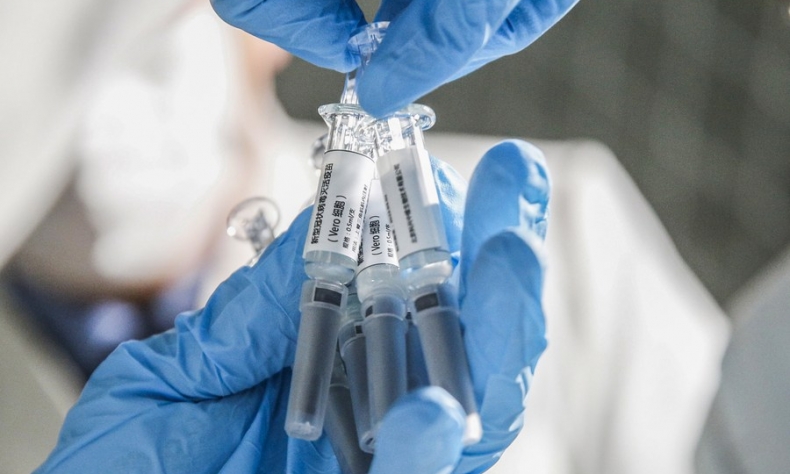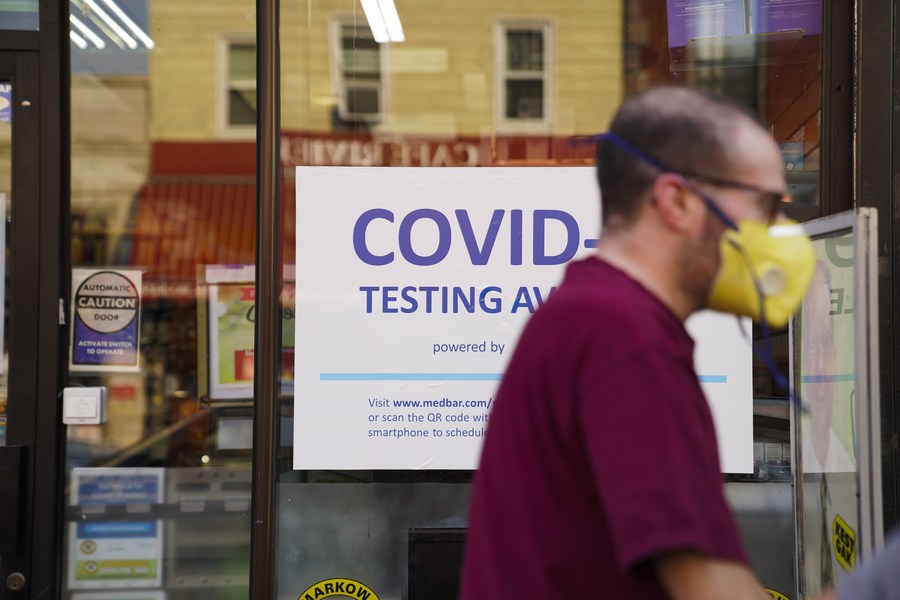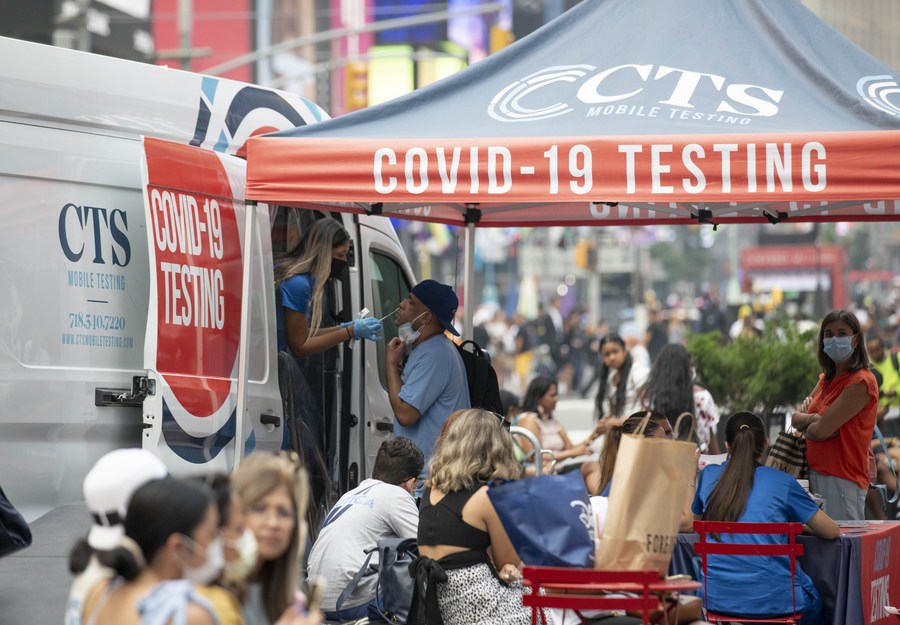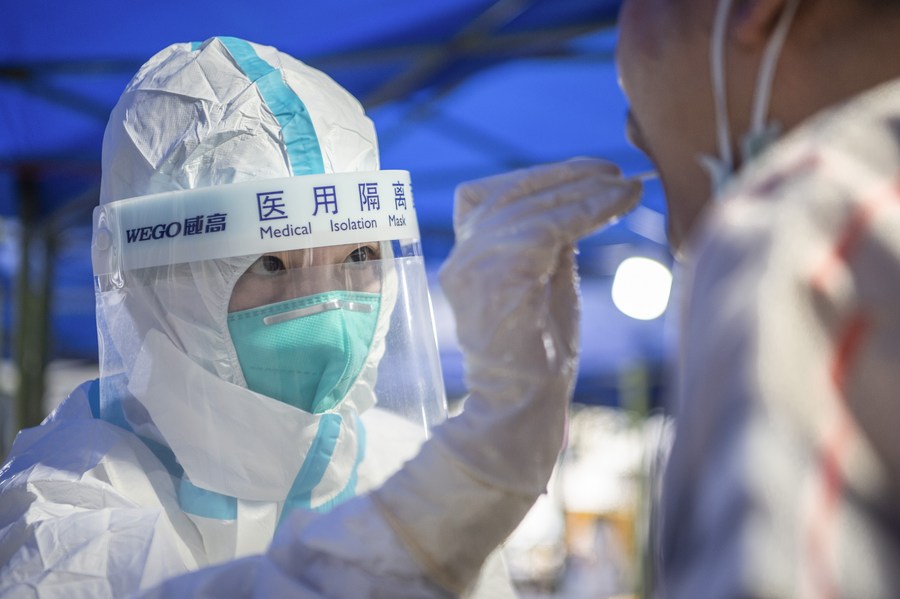Anti-Virus Cooperation Is a Must

Engaging with the rest of world and turning to science-based origin tracing is the best option currently on the U.S. Government’s table.
U.S. intelligence agencies failed to reach a conclusion on the origin of the COVID-19 virus within 90 days as demanded by President Joe Biden, another solid piece of evidence that the U.S. is politicizing virus origin tracing in a game of deflection. Based on the report released on August 27 by the Office of the Director of U.S. National Intelligence through an inconclusive and unclassified summary, the U.S. intelligence community was fundamentally unable to come to a firm conclusion on where the virus came from. How can intelligence agencies fix a biological problem that to this day bewilders scientists? By allowing intelligence to interfere with virus origin investigations, the U.S. Government does not really intend to uncover the beginnings of the pandemic, but purely aims to discredit China.
The report, in typical U.S. manner, accuses China of obstructing international investigations and refusing to share information and blaming other countries.
Presuming that the virus came from China and then directing the intelligence community to search for evidence denotes a presumption of guilt, which is illegal in both China and the U.S. That the Biden administration tries to trace the virus origin via dishonest means is in itself a sin, trampling on the spirit of science and the rule of law. Also, it constitutes a blow to the U.S. Government’s international credibility and cachet.
By doing so, the U.S. is hindering the international community’s anti-virus cooperation as well as the exploration into public health security.

Vital openness
China was the first to report novel coronavirus cases to the World Health Organization (WHO), but this does not mean that the virus originated from China. Since the outbreak of the COVID-19 pandemic, China has operated in a transparent, open and cooperative manner by warning the rest of the world about the virus and offering crucial information on its genetic sequence. During the WHO mission’s two visits to China, China accommodated them with anything they required. The experts visited whatever places they wanted to, met all people they needed to see, and checked any data they had to look into. Their conclusion was that a COVID-19 virus lab leak was “extremely unlikely.” This conclusion obviously ran counter to American objectives, and thus they thrust aside science and invited in the intelligence to start scripting a new virus-tracing story.
More and more information indicates that before China first reported the coronavirus, several cases had already emerged in the U.S., Italy and Spain. More importantly, before cases emerged in China, the U.S. had already experienced a public health emergency in the form of an unidentified viral infection. The symptoms presented by patients infected with this unidentified virus were very similar to those of the novel coronavirus. Even so, the U.S. still refuses to be investigated. Its current behavior undoubtedly triggers wider international suspicions regarding the roots of COVID-19 and the U.S. has gone on to become the biggest stumbling block in origin-tracing research.
Questions to answer
Suppose the United States really is interested in finding out the source of the novel coronavirus, it needs to answer the following four questions—keeping an open outlook. The questions were put forward by Zhao Lijian, spokesperson of China’s Ministry of Foreign Affairs, to the U.S., but thus far have gone unanswered.
First, the U.S. Government should disclose and test case samples of respiratory diseases of unknown causes that began to emerge within its borders in July 2019.

The unknown respiratory disease breaking out in the states of Wisconsin and Maryland showcased various similarities with COVID-19 symptoms. The lung illness was initially believed to have links with vaping, but after the outbreak of the novel coronavirus, the condition suddenly disappeared and COVID-19 cases began to surge. Coincidence? Perhaps. Last year, the U.S. Centers for Disease Control and Prevention openly admitted that several patients who were believed to have died from influenza did test positive for the COVID-19 virus.
Second, the U.S. should call upon the WHO mission to examine the notorious Fort Detrick Biological Laboratory in Maryland as well as another 200 U.S. biological labs located outside the country. Particularly, Fort Detrick is the center of development for the U.S. biological weapons programs, namely, the United States Army Medical Research Institute of Infectious Diseases. The institute has long been engaged in the research on and modification of coronaviruses. It was shut down in 2019 following a safety lapse. Soon after this biosecurity hazard occurred, the earlier mentioned lung disease with almost the same symptoms as COVID-19 broke out. However, the U.S. Government has never explained this mysterious event to its own public—let alone the rest of the world.
Third, the U.S. should invite the WHO mission to look into the University of North Carolina. The U.S. has always accused the Wuhan Institute of Virology of triggering COVID-19 by conducting studies on coronaviruses, but the fact is that the U.S. is the most active player and the biggest fund supplier for such research activities. Particularly, the Dr. Ralph Baric team at the university is authoritative in this field and their labs, experienced in coronavirus synthesis and modification.
Fourth, the U.S. should release further data on the cases of U.S. military personnel who fell ill after attending the Seventh CISM Military World Games held in Wuhan in October 2019. The U.S. delegation consisted of more than 300 members, several of whom were sent home after presenting severe symptoms—once again extremely similar to COVID-19—during the games. The U.S. Government needs to disclose what disease these athletes were in fact suffering from at the time. After the games’ closing ceremony, COVID-19 hit Wuhan.

According to information found on the website of the U.S. National Institutes of Health, five states experienced COVID-19 infections in December 2019. However, the U.S. sealed up all relevant blood samples on January 2, 2020, and stonewalled any further investigation on the grounds of national security and disrupting origin tracing. The Florida Department of Health website once published the January and February 2020 data of 171 local patients presenting with COVID-19 symptoms or testing positive for the virus. These data were later deleted.
Crucial engagement
Since the outbreak of the pandemic, the U.S. has always stayed out of international cooperation efforts battling the coronavirus, but it has never stopped vilifying China by politicizing the origin tracing work. This most recent report by U.S. intelligence agencies swerves the accountability for its own failure to contain the virus. In a way, this is reminiscent of the U.S. excuse to launch its invasion of Iraq back in 2003, all in the name of “weapons of mass destruction.”
Virus origin tracing is a scientific issue. It should be left to scientists to uncover the answer. Top-notch scientists around the world, including Chinese ones, are working around the clock, carrying out investigations based on their professional knowledge. The investigation conducted in Wuhan has already helped them to produce some results. However, to trace virus origins is a time-consuming process of data collecting and reasoning. There is still a lot of complicated work to do before the truth can, and will, come to light.
To fight the virus, the world needs cooperation and the guidance of scientific knowledge. However, if the U.S. refuses to uphold a scientific and cooperative attitude, no methodical conclusion can be reached regarding the source of COVID-19. Engaging with the rest of world and turning to science-based origin tracing is the best option currently on the U.S. Government’s table.
The truth can withstand scrutiny.
 Facebook
Facebook
 Twitter
Twitter
 Linkedin
Linkedin
 Google +
Google +










